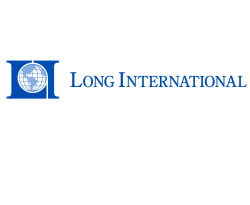The courts have been busy dealing with issues relating to bidding on public works projects. Two recent decisions have been issued: Great Western Contractors, Inc. v. Irvine Unified School District (2010) 2010 DJDAR 13815 and Schram Construction Inc. v. The Regents of the University of California (Southland Industries) (2010) 2010 DJDAR 13398.
This construction alert will discuss each of these cases and the impact they may have on contractors and public entities.
Great Western Contractors v. Irvine USD
In Great Western, the Irvine School District intended to modernize two schools. It called for bids and, as part of the process, established a prequalification process. As part of the prequalification process, contractors were asked to respond to a questionnaire that included questions relating to license status. Great Western responded to the questionnaire and was advised by the District that it was prequalified as a bidder. It then submitted bids on both projects. All bids were to remain under seal until opened by the District.
Two other competitors of Great Western submitted bids including Construct 1. For unknown reasons, Construct 1 was allowed to see the bids before they were to be formally opened and submitted its bid based on information it saw. The bids were then opened and Great Western was the lowest bidder on both projects by a combined $800,000. Nevertheless, the day after the bids were opened, Construct 1 submitted a bid challenge claiming that Great Western's bid should be rejected based on questions relating to its license status. Instead of conducting an investigation, the District's counsel unilaterally determined that Great Western's bid was nonresponsive and should be rejected. Although one of the board members asked for additional information, the board was ultimately convinced to adopt counsel's recommendation and the bid was rejected as nonresponsive. The project was then awarded to Construct 1, which then immediately began work on the project. Great Western immediately sought a writ of mandate, but the trial court rejected it on the basis that the bid could be rejected as it was nonresponsive. Great Western appealed.
In a stinging opinion, the appellate court reversed the trial court, holding that the District was wrong to determine the bid was nonresponsive. The court determined that the issue was similar to that faced by the court in D.H. Williams v. Clovis Unified School District (2007) 146 Cal.App.4th 757 ("D.H. Williams") [in which Coleman & Horowitt, LLP represented the real party in interest], and that if there was any question regarding the license status of Great Western, the issue was one of nonresponsibility rather than nonresponsiveness, under which Great Western was entitled to a hearing before the District, which Great Western was denied. The appellate court thus remanded the matter back to the trial court for further hearings as to whether or not the District denied Great Western a hearing, in which event Great Western might have a claim for its bid preparation costs.
In addition to reversing the trial court's order, the appellate court noted the egregious actions on the part of the District in obviously favoring Construct 1 to the exclusion of Great Western and thus costing taxpayers over $800,000. The court noted the impropriety in allowing Construct 1 to have access to the bids before they were opened and the steps the District took to ignore all the positions raised by Great Western in response to the challenge made by Construct 1, which seemed to be an obvious attempt by the District to favor Construct 1.
Schram Construction v. Regents of University of California
In Schram Construction, the court dealt with bid procedures where the best value method is used to award contracts. In the action, the University of California entered into a general contract with DPR Construction for the design and construction of a new medical center for UC San Francisco. DPR then solicited bids for mechanical, plumbing, and electrical work on six individual bid packages and one alternative. Bidders submittted prequalification materials that included a best value questionnaire, a lump sum preconstruction bid that included labor rates and an optional percentage fee for future construction. The bid solicitation also included a four-step selection process that indicated DPR and the University would prequalify bidders, determine a total best value questionnaire score based on financial condition, experience, management competency, labor compliance, and safety record, conduct a blind bid opening and then identify the best value bid by applying a formula to the lump sum preconstruction bid, labor rates, and option percentage and dividing the result by the bidder's best value questionnaire scores.
Schram Construction submitted a bid for two packages (BP1 and BP3), while a competitor, Southland, submitted bids for BP1 and BP2 along with a letter offering the University a discount if they were awarded both packages together. After the bids were opened, the University rejected all the bids and conducted a re-bid. This time, however, the University invited bidders who had previously bid on packages BP1 through BP6 in the initial bidding as well as soliciting bids on alternative bids. The amended instructions informed bidders that there were new alternative packages, but that a subcontractor could only bid on them if they had bid on the previous alternatives. Schram submitted a protest, claiming that because it submitted a bid on BP1 and BP3, it should be allowed to submit a bid on all portions of the new solicitation. It further asked for clarification as to how the bids would be evaluated. No response was, however, provided. Schram thus submitted bids for BP1 and BP3 as well as a team bid for BP2, but did not submit bids for any of the alternative packages. Competitors Southland and ACCO Engineered Systems submitted bids on BP1 and BP2, but also on ALT-1, 2.
Bids were thereafter opened and DPR elected not to award any contracts for BP1, BP2, or BP3, but instead to award a Contract in the alternative combined package of ALT-1, 2. It turned out that unbeknownst to Schram and other subcontractors, one of the selection criteria was that one contractor be used for all portions of the subcontract in order to provide efficiency to the project. Schram believed that if it had known this information, it would have submitted a bid on the alternative packages. Schram thus filed a petition for writ of mandate, which was denied by the trial court. Schram appealed. On appeal, the court reversed the decision of the lower court. The court found that Public Contracts Code § 10506.4 required the publication of bid package selection criteria. While some of the selection criteria were published, the criterion relating to the use of one subcontractor was not made available or known. Schram contended that because it did not have this information, it did not bid on the alternative packages, but would have done so had such information been published. It thus argued that it was placed at a competitive disadvantage. The University argued that Schram made a tactical decision not to submit a bid on the alternative bid package, but the court rejected this argument. The court found that Schram "was not provided the information necessary to accurately assess the risk that it would not be awarded either BP1 or BP2 and weigh this risk against the alleged preference for BP3." The court then found that the bid selection process did not satisfy Public Contracts Code § 10506.04(c) as it permitted the University to manipulate the bid selection in favor of or against a particular bidder. While the University was permitted to use alternatives, it was required to nevertheless provide bidders with information as to how the alternative packages would be evaluated. The court thus reversed the trial court's decision, directed the trial court to issue the writ of mandate invalidating the contract to Southland and mandating the University to publish a new bid solicitation consistent with the opinion and call for re-bids for the work previously solicited.
Although the best value bidding process is being used on a limited basis, it can be expected that on certain public works projects this process will be used more often. It will therefore be important for contractors to understand the requirements for submitting bids and evaluating bids under the best value method as set forth in the Public Contracts Code. You should therefore carefully read bid solicitations as they are received in order to assure you are protected if you ultimately receive the bid and, more importantly, if you are unsuccessful, but you did not receive the bid due to an improper action on the part of the public entity.
DO NOT REPRODUCE WITHOUT WRITTEN PERMISSION BY AUTHOR.










